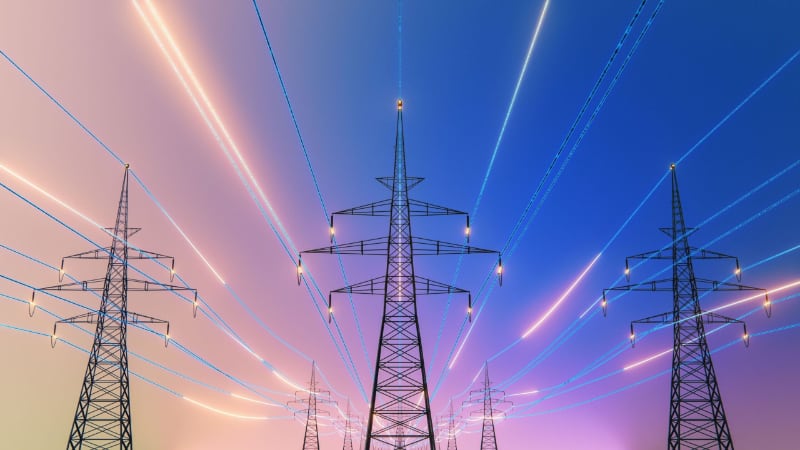
Electric vehicles (EVs) are what everyone seems to be talking about these days. They are new and fun and for some, are the answer to a few of the challenges the world faces. In the push for more sustainable transportation, everyone wants to do their part to help reduce carbon emissions. According to the EPA, transportation makes up about 27% of total emissions in the U.S. On the surface, it can be easy to assume that by simply swapping a traditional internal combustion vehicle for an EV, the problem is solved. While EVs do cut carbon emissions, they only reduce them by about 50% because of how the electricity to charge them is generated today. If the goal is to fully eliminate carbon emissions in transportation, turning to renewable energy and new technologies can help meet that goal. Clean energy EV charging leads to other benefits, as well.
Where Does Our Electricity Come From?
 To start, we should first look at how our electricity is generated. According to the U.S. Energy Information Administration (EIA), the U.S. has many different energy sources. In 2021, of the total 4.12 trillion kWh generated, renewables accounted for only 20%. The rest of the makeup is illustrated in the graphic here, which shows that on average, about 60% of the energy used in charging EVs comes from fossil fuels. While this mix of power production is not consistent across the U.S., with some areas depending 100% on fossil fuels while others rely more heavily on renewables, it’s safe to say that if grid power is utilized to charge EVs, carbon emissions are involved.
To start, we should first look at how our electricity is generated. According to the U.S. Energy Information Administration (EIA), the U.S. has many different energy sources. In 2021, of the total 4.12 trillion kWh generated, renewables accounted for only 20%. The rest of the makeup is illustrated in the graphic here, which shows that on average, about 60% of the energy used in charging EVs comes from fossil fuels. While this mix of power production is not consistent across the U.S., with some areas depending 100% on fossil fuels while others rely more heavily on renewables, it’s safe to say that if grid power is utilized to charge EVs, carbon emissions are involved.
How To Charge an EV with Clean Energy
Charging an EV with clean, carbon-free electricity is easier than it may seem. The first step is to start with a renewable energy source such as solar, wind, hydro, biomass or geothermal; the most accessible of all these sources today is solar. In combination with a Battery Energy Storage System (BESS) or microgrid, solar can provide the clean power needed to charge your EV. On most days there is ample sun to power an EV charger, and excess power can charge the batteries. When the sun sets, the stored energy in the batteries can charge your EV. This means no grid power is required, and carbon emissions for transportation are cut by 100%.
Additional Benefits of Clean EV Charging
Reducing carbon emissions is not the only benefit of clean EV charging. Another notable benefit is the ability of a microgrid system to provide power in the event of a utility outage. As EV adoption grows, the stress on the grid also grows. During very hot weather in California last summer when many were using A/C to stay cool, the stress on the grid went sky high. The state put out an alert to EV owners, asking them not to charge their cars during peak demand times to reduce the stress on the grid and prevent blackouts. Utilizing a clean EV charger powered by a microgrid can mitigate issues like this and give users peace of mind knowing charging will always be available when needed.
Diving into the costs of installing and using EV chargers illustrates another benefit of clean EV chargers. Utilizing renewable energy and storage reduces electricity usage and offsets utility costs. This includes actual kWh consumed, as well as demand charges, which utilities may add to a bill to account for a customer’s need to use large amounts of power at a moment’s notice. Traditionally, homes and small businesses have been able to avoid demand charges, but as EV adoption grows, power requirements will also grow, and demand charges may begin to be applied to other energy consumers. Implementing renewable energy plus storage can help EV users know and even predict their costs for electricity as energy prices continue to fluctuate and rise.
Clean EV charging can also offset the costly need to upgrade electrical infrastructure. Many homes and businesses may not have the electrical infrastructure needed to support EV charging, and upgrades would be required. Utilizing a power generation and battery system can eliminate the need for infrastructure upgrades.
Microgrids or battery storage systems can help EV customers and businesses in more ways than cutting carbon emissions. It can be costly on the front end, but when designed correctly, energy generation plus storage has the potential for the biggest impact to meet your defined energy goals. The energy experts at FTI look forward to working with you on a full solution, from initial assessment to installation, implementation and optimization, to meet all of your energy needs today and in the future. Contact us today to learn more.
If you enjoyed this blog article, please subscribe to stay up to date on the latest industry news from our experts at FTI.










